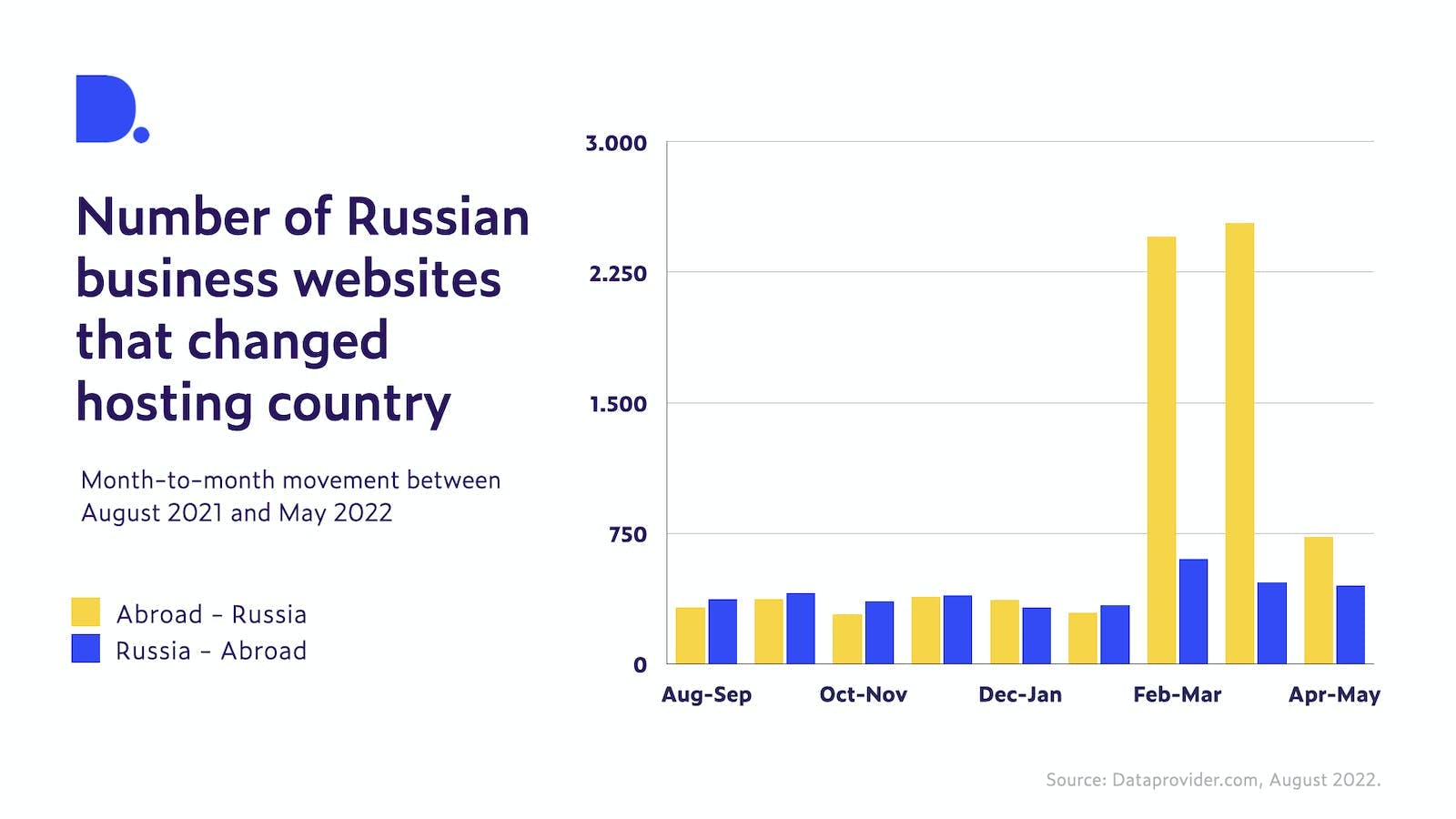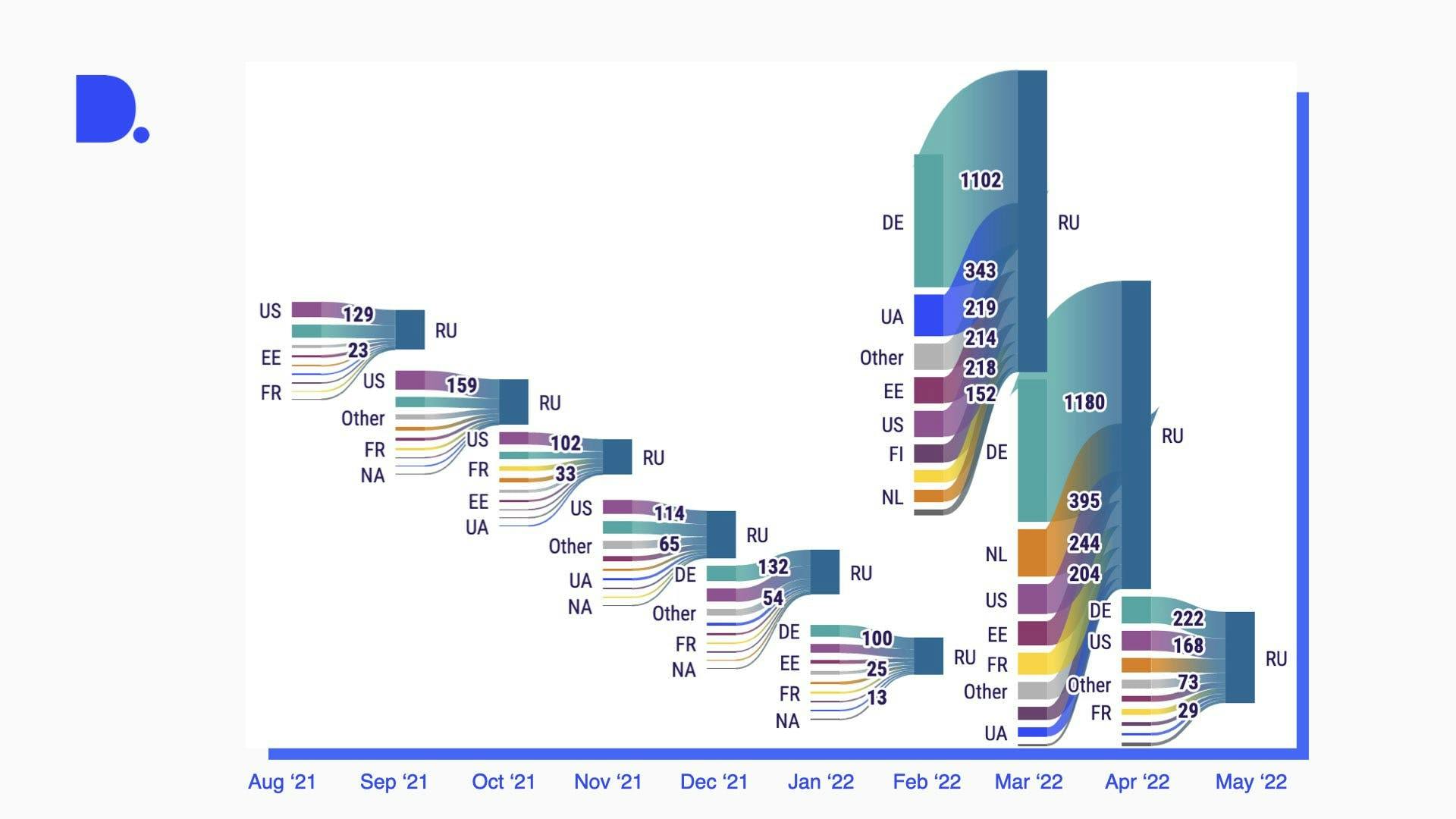Tracking the movement of Russian business sites
- almost 3 years ago
- 2 min read
Russia's invasion of Ukraine in February 2022 is a humanitarian tragedy and has wide reaching global economic effects. In this article we take a deeper look at what is happening on the web. Specifically, we track Russian business websites, look at some of the main countries where these sites are hosted and how the war has reshuffled some of these connections.
Sanctions and public outcry to stop all non-essential business with Russia has forced businesses to adapt quickly to new conditions. Here, we track over 400,000 (n = 414,447) Russian business sites between August 2021 and May 2022. We started our analysis in August 2021 to get a more in-depth understanding of the month-to-month movement patterns of websites and where they’re hosted. Starting well before the war allows us to better understand if patterns changed due to the invasion of Ukraine.
Hosting country based on ip
In our Data Dictionary, ‘Hosting country’ refers to the country where a website is hosted. We determine the hosting country based on the IP address of the website: the hosting country can differ from the country where the company that owns the website is located. So, a company might be based in Germany but hosts its website on a server in Austria. Reasons to host in a different country vary, but often it’s due to costs or improved infrastructure.
Among the over 400,000 Russian business websites we’ve analyzed, the majority (83%) are hosted in Russia, around 4% are hosted in the US as well as in Germany (4%). The remaining 8% are distributed across a wide range of countries. So overall, there isn’t a lot of movement between hosting countries.
However, if we zoom in a little and only look at those websites that actually do switch from Russia to another country or from another country to Russia, we see a clear spike in the number of Russian business sites that switch from abroad to Russia (see Figure 1).

If we zoom in even further, we see that among the sites that moved to Russia at the beginning of February 2022, a large share was initially hosted in Germany (DE) but also in the Netherlands (NL), Ukraine (UA) and Estonia (EE), among others (see Figure 2).

Russian businesses likely feared that their websites could be shut down or deemed inaccessible if located in another country.
Our analysis of movement patterns of Russian business sites among different hosting countries has shown that particularly the flow into Russia spiked in February and March 2022, coinciding with the invasion of Ukraine and the increase in sanctions. Altogether, this data suggests that in peaceful times it may not matter where a website is hosted, but international tensions and conflict may suddenly trigger a reshuffling to protect national interests.